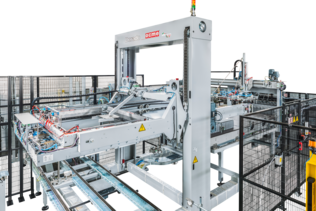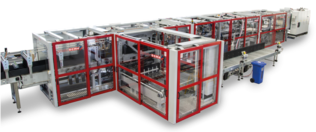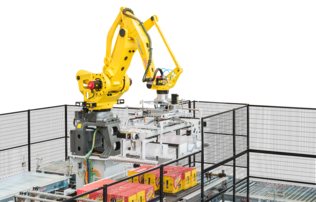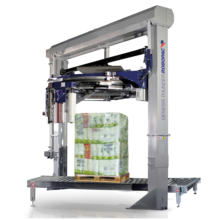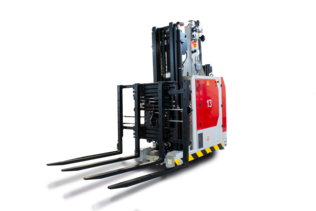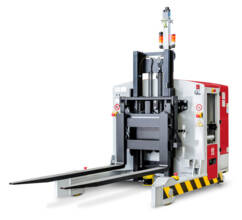A historic brewery which has been operating since 1890, the group has supplied Mahou with a range of technology solutions for palletising and depalletising, secondary packaging (case-packer and shrink-wrapping machines), banding (banding machines) and intralogistics (laser-guided systems).
Particularly interesting is the LGV supply system to the stretch-wrapping island. Ocme - which has been working with Mahou since 1982 - has provided engineering support for all the brewery's fully automated high-speed lines: bulk depalletisation, case-packing, palletising, and half-pallet banding, with automation of consumable supplies for the line and conveyance of pallets from the palletising islands to the stand-alone banding island, as well as from the banding island to the warehouse, through the use of laser-guided vehicles. This solution has achieved maximum optimisation of the line. In practice, what Mahou needed was to automate end-of-line operations and optimise this stage of the process so that there were no lulls in production, to allow half pallets palletised on the line to be banded. Rising up to the challenge, Ocme and Robopac proposed a series of innovations, including the first ever wrap-around case packer to be able to pack 800x600 size trays (which have become part of the logistical burden in response to distribution demand).
The palletising lines supplied were among the first on the market to be able to palletise half pallets with small packages.
Not only that, the use of a fleet of laser-guided shuttles has optimised the line and the speed of the banding machines which - if subsequently integrated with the palletising islands - would have experienced falls in production, occupied much more production space, and would have prevented automatic vehicle access between lines for the supply of consumables. All the innovations have therefore brought numerous advantages for the customer, such as fewer conveyors, optimised components, synchronised system management, and no more build-ups of product between the machines, together with a much smaller footprint and no more overspeeding between the modules, which is commonplace in conventional systems.
The resulting savings in energy, space, and staff numbers (given the high level of automation) is accompanied by further savings in maintenance and spare parts. The solutions offered by Ocme and Robopac, which began working on the project in 2011, concern the entire production and configuration of the dry area of five lines.
